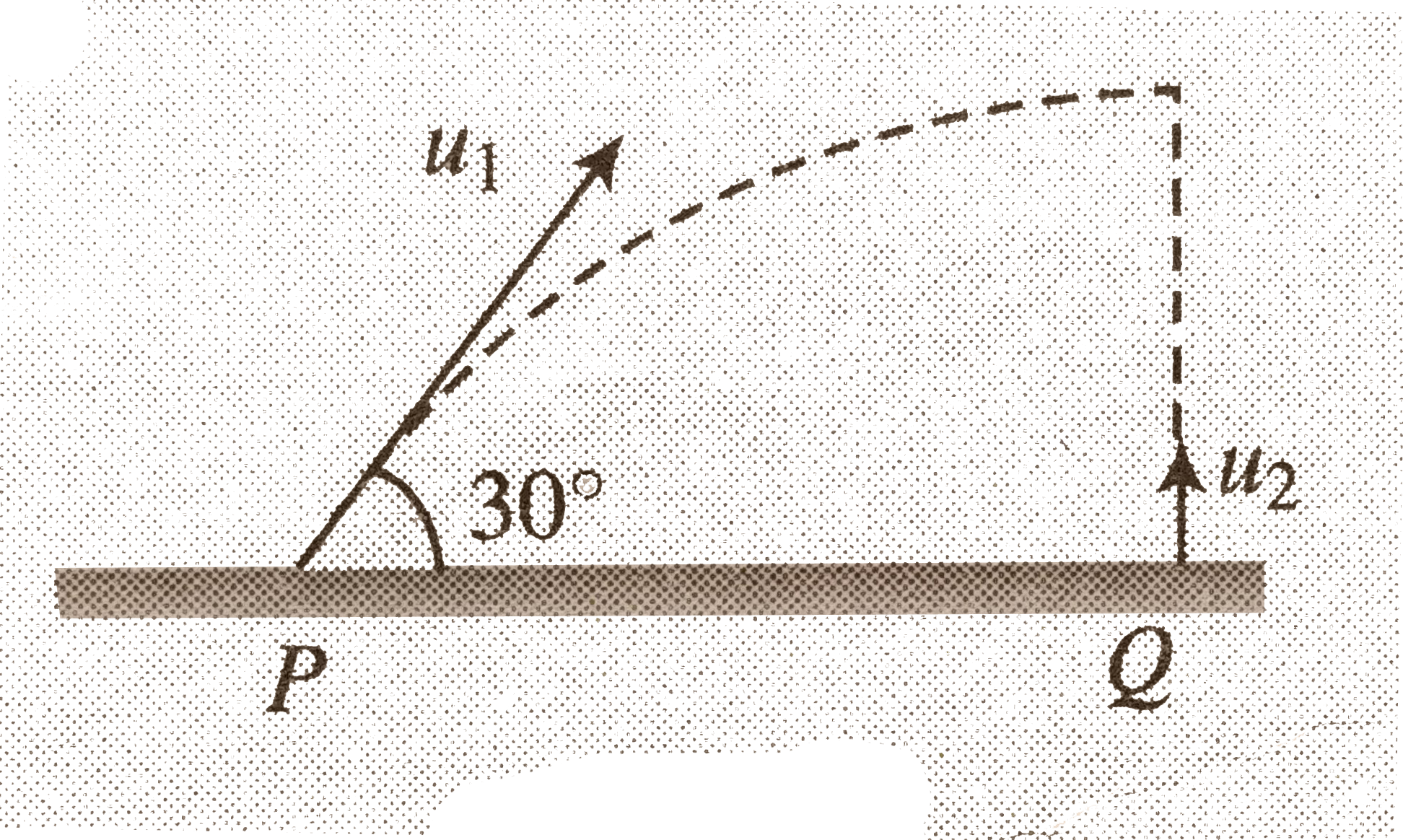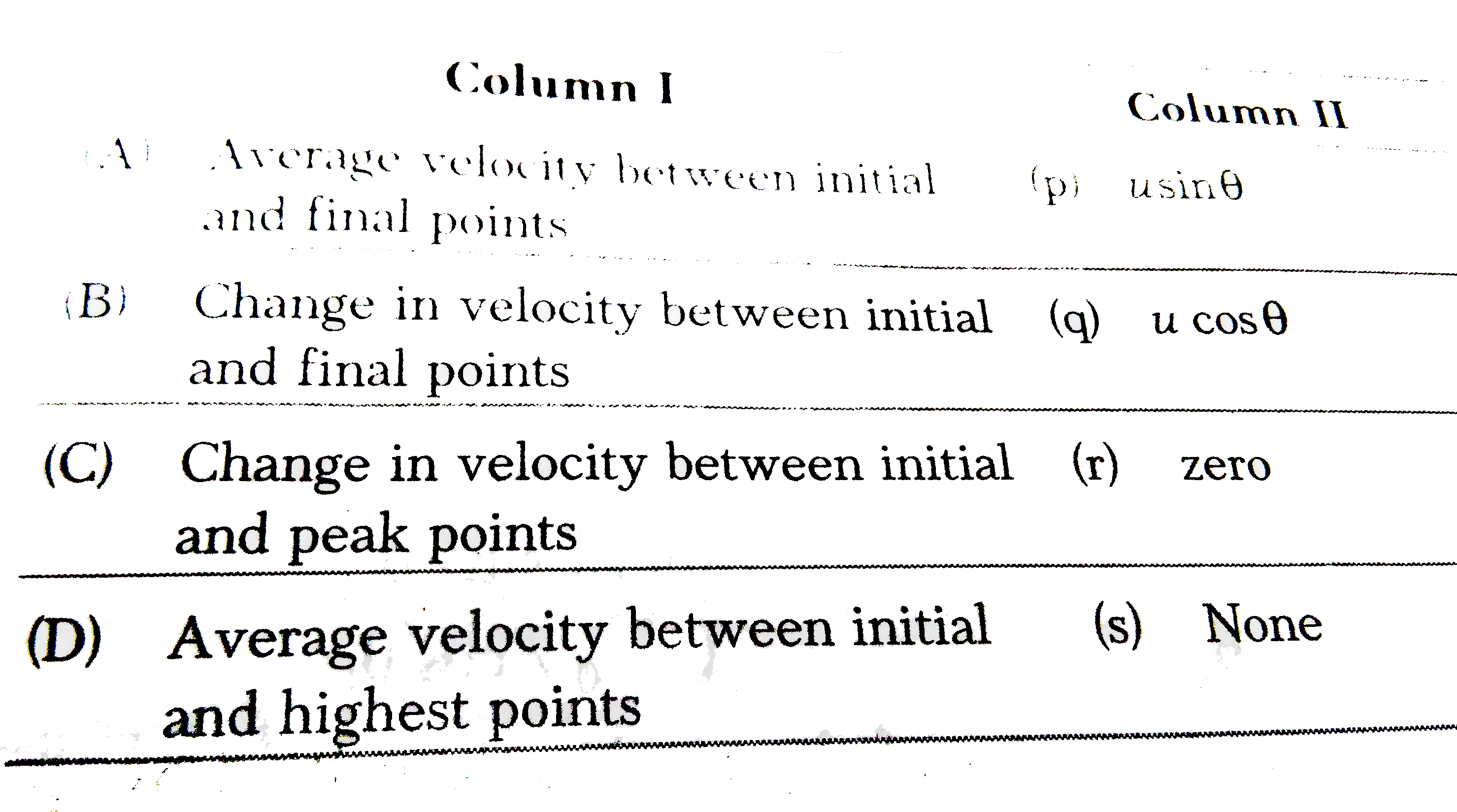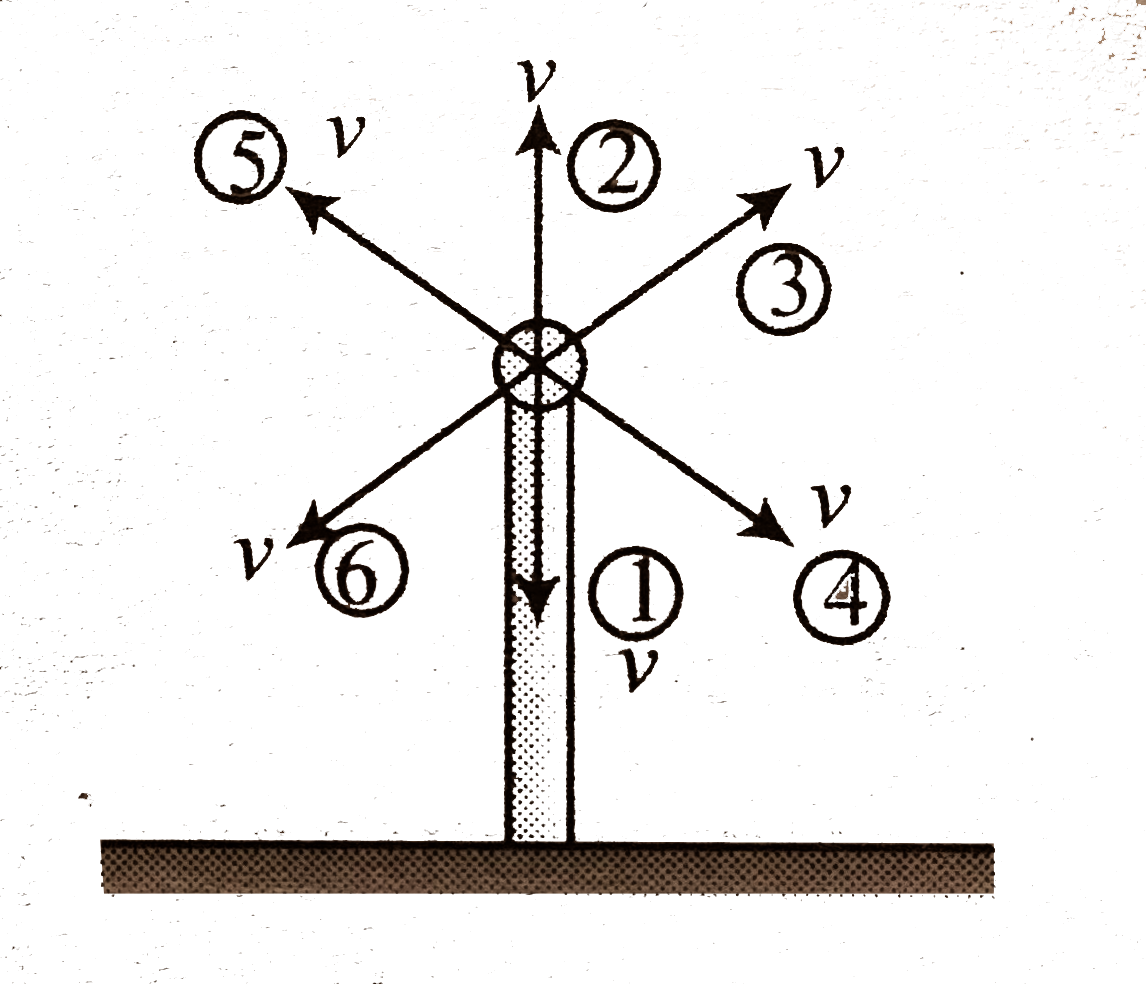A particle is thrown with velocity u at an angle ∝ from the horizontal. Another particle is thrown with the same velocity at an angle ∝ from the verticle. What will be the ratio of times of flight of two particles ?
To find the ratio of the times of flight of two particles thrown at different angles, we can follow these steps:
Step 1: Understand the problem
We have two particles:
- Particle 1 is thrown with velocity u at an angle α from the horizontal.
- Particle 2 is thrown with the same velocity u at an angle α from the vertical.
Step 2: Determine the vertical components of the velocities
For Particle 1:
- The vertical component of the velocity u1 is given by:
u1=usin(α)
For Particle 2:
- Since it is thrown at an angle α from the vertical, it makes an angle 90∘−α with the horizontal. Thus, the vertical component of the velocity u2 is:
u2=usin(90∘−α)=ucos(α)
Step 3: Use the formula for time of flight
The time of flight T for a projectile is given by the formula:
T=2uverticalg
where g is the acceleration due to gravity.
For Particle 1:
T1=2usin(α)g
For Particle 2:
T2=2ucos(α)g
Step 4: Calculate the ratio of times of flight
Now, we need to find the ratio T1T2:
T1T2=2usin(α)g2ucos(α)g=sin(α)cos(α)=tan(α)
Conclusion
Thus, the ratio of the times of flight of the two particles is:
T1T2=tan(α)
---
We have two particles:
- Particle 1 is thrown with velocity u at an angle α from the horizontal.
- Particle 2 is thrown with the same velocity u at an angle α from the vertical.
For Particle 1:
- The vertical component of the velocity u1 is given by:
u1=usin(α)
- Since it is thrown at an angle α from the vertical, it makes an angle 90∘−α with the horizontal. Thus, the vertical component of the velocity u2 is:
u2=usin(90∘−α)=ucos(α)
The time of flight T for a projectile is given by the formula:
T=2uverticalg
where g is the acceleration due to gravity.
T1=2usin(α)g
T2=2ucos(α)g
Now, we need to find the ratio T1T2:
T1T2=2usin(α)g2ucos(α)g=sin(α)cos(α)=tan(α)
Thus, the ratio of the times of flight of the two particles is:
T1T2=tan(α)
Topper's Solved these Questions
- KINEMATICS-2BOOK - CENGAGE PHYSICS ENGLISHCHAPTER - KINEMATICS-2EXERCISE - Exercise 5.2
25 Videos
- KINEMATICS-2BOOK - CENGAGE PHYSICS ENGLISHCHAPTER - KINEMATICS-2EXERCISE - Exercise 5.3
12 Videos
- KINEMATICS-2BOOK - CENGAGE PHYSICS ENGLISHCHAPTER - KINEMATICS-2EXERCISE - Solved Examples
7 Videos
- KINEMATICS-1BOOK - CENGAGE PHYSICS ENGLISHCHAPTER - KINEMATICS-1EXERCISE - Integer
9 Videos
- KINETIC THEORY OF GASESBOOK - CENGAGE PHYSICS ENGLISHCHAPTER - KINETIC THEORY OF GASESEXERCISE - Compression
2 Videos
Similar Questions
A particle P is projected with velocity u1 at an angle of 30∘ with the horizontal. Another particle Q is thrown vertically upwards with velocity u2 from a point vertically below the highest point of path of P. Determine the necessary condition for the two particles to collide at the highest point.
 .
.
View SolutionA particle is thrown with a speed u at an angle θ with the horizontal. When the particle makes an angle ϕ with the horizontal. Its speed changes to v :
View Solution
Knowledge Check
If a body 'A' of mass M is thrown with velocity V at an angle of 30∘ to the horizontal and another body B of the same mass is thrown with the same speed at an angle of 60∘ to the horizontal, the ratio of horizontal ranges of A to B will be
A1:3B1:1C1:√3D√3:1A particle is thrown with a speed is at an angle θ with the horizontal. When the particle makes an angle ϕ with the horizontal, its speed changes to v, then
Av=v0cosθBv=v0cosθ⋅cosϕCv=v0cosθ⋅secϕDv=v0secθ⋅cosϕ
A particle is projected with a velocity of 20ms−1 at an angle of 60∘ to the horizontal. The particle hits the horizontal plane again during its journey. What will be the time of impact ?
View SolutionA particle is projected form ground with velocity u ar angle θ from horizontal. Match the following two columns.

View SolutionA particle is projected from the ground with velocity u making an angle θ with the horizontal. At half of its maximum heights,
View SolutionAll the particles thrown with same initial velocity would strike the ground.
 .
.
View SolutionA particle is fired with velocity u making angle θ with the horizontal.What is the change in velocity when it is at the highest point?
View SolutionA particle is projected with a velocity 10 m//s at an angle 37∘ to the horizontal. Find the location at which the particle is at a height 1 m from point of projection.
View Solution

